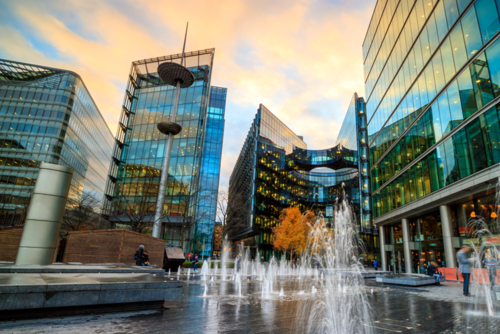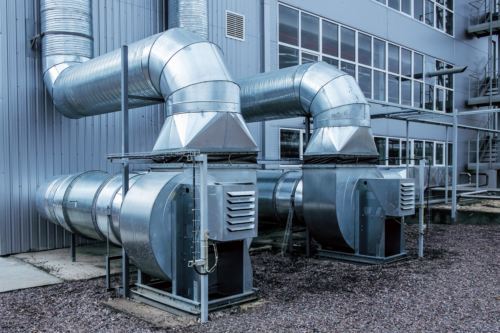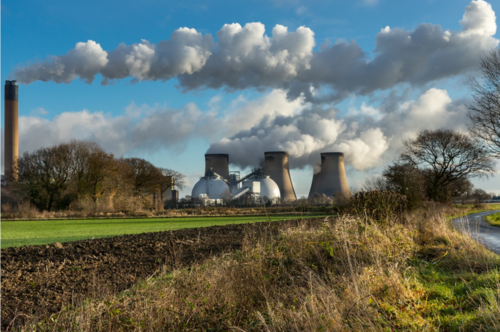Summer has arrived – but what does this mean for air quality
With the clear blue skies and warm sunny days of Summer, it’s easy to think that air pollution will be at its lowest, but that is often not the case. Heat waves can often lead to poor air quality as the extreme heat and polluted air increase the amount of both low level ozone and particulate pollution.
According to the Environment Agency, rainfall totals for June range from 38 to 62 percent of the long-term average. However, according to their data, rainfall has been lower than average since the beginning of the year, and so soils are very dry. Rain usually results in less air pollution as it can dissolve and wash down some pollutants from the air.
This year the UK has also been subjected to above average windy conditions, increasing the amount of dust that becomes airborne, and these particulates can include chemicals and biological agents from fertilisers and insecticides used in farming. Dust storms from the Sahara are a relatively common occurrence in the UK when desert dust storms coincide with southerly winds, and this can also affect air pollution levels. Add to this that we’re in the peak of grass and nettle pollen season, which is turning out to be particularly intense this year, and it looks like those with hay fever, asthma and lung conditions are in for a rough time.
For people with chronic lung conditions like COPD, asthma or chronic bronchitis; people with heart disease or diabetes; children and the elderly, high pollution levels mixed with high temperatures can cause serious health problems.
What about indoor air quality?
The main indoor air pollutants are particulate matter (PM), volatile organic compounds (VOCs), carbon dioxide (CO2) and radon (Rn), and nitrogen dioxide (NO2) can enter a building from outside. In addition, environmental factors like humidity, temperature and air pressure also contribute to air quality and can create conditions that encourage biological contaminants to increase, such as, mould, bacteria and viruses.
Many old buildings in the UK do not enjoy the benefits of mechanical ventilation systems, relying instead on a mix of natural ventilation and old recirculating AC units. To make matters worse, most of these buildings will have been refurbished over the years, with work completed to make them more air tight and therefore more energy efficient. Having an energy efficient building is better for the environment as less energy usage equals less carbon emissions, however, a building which has been made airtight without adding ventilation of some sort, usually means it will be poorly ventilated.
Airborne contaminants can build up quickly in poorly ventilated spaces especially as the temperature rises. Opening windows and doors can help dilute the indoor air with fresh air from outside. However, fresh air does not mean clean air, and pollen and other allergens, particulates and nitrogen dioxide from traffic can enter a building through these openings.
Where mechanical ventilation systems bring in filtered air from outside, some air conditioning systems only recirculate air and cannot add fresh air to the mix. So, if your building has an AC system, find out if it is just recirculating air around the building. If it is, then indoor pollution levels could be building, even though comfort levels are improved as the air is cooled. So recirculating AC systems cause a bit of a conundrum in summer, as cooling is improved with the windows closed, and yet the air becomes staler and more polluted as the day progresses. Also, as already mentioned, whilst opening windows and doors improves ventilation and dilutes polluted indoor air, it does allow the access of pollutants from outdoors.
So, is there a solution?
Firstly, as it’s an invisible problem, indoor air quality should ideally be monitored 24/7 using high quality sensors – once you know what’s in the air you can take appropriate steps to improve it. If the opening of windows is your only means of ventilation then an outdoor air quality monitor can indicate when ambient air quality is poor, so windows can be kept closed until the danger has passed. These spikes in outdoor pollution are usually during rush hour at both ends of the day, when there are wild fires near by and when grass is being cut in the area.
Also, IAQ monitors that measure indoor CO2 levels can indicate when a space is poorly ventilated. Indoors, consistent levels of 800ppm or less indicates a space is well ventilated. It is recommended to keep CO2 levels around 800ppm indoors, and where readings are consistently over 1500ppm, action should be taken to improve ventilation.
High quality air purification and sterilisation units can remove contaminants from the air, including bacteria and viruses, making for safer indoor spaces. They cannot, however, reduce or remove CO2, so it’s advised to open windows regularly, avoiding rush hour at both ends of the day. The introduction of fresh air will reduce CO2 which can be detrimental to health in its own right, and the filtration units will deal with other pollutants including PM, NO2, VOCs, pollen, mould spores and viruses.
Before purchasing an air purification unit check that it incorporates a HEPA13 filter as a minimum, that will capture 99.9 percent of particulate matter down to 1µg/m³ (micrograms per cubic meter of air), and preferably also uses a high grade activated carbon filter to reduce chemical pollutants (VOCs), NO2 and other gases. Some units also use UVC light to kill 99.9 percent of airborne bacteria and viruses by damaging molecules in proteins, although these are more expensive and mostly used in a healthcare setting.
Heating, ventilation and air conditioning (HVAC) and other types of mechanical ventilation systems have the ability to significantly improve health and wellbeing in a building, by replacing stale air with filtered outdoor air. However, mechanical ventilation systems must be regularly maintained and cleaned to avoid the build-up of pathogens, and subsequent exposure to building occupants. The filters should be regularly cleaned and replaced and the ducting also thoroughly disinfected. Some modern systems include ultraviolet germicidal irradiation, or UVGI, that kills micro-organisms using UVC light.
So, in short if your building has a good, well optimised HVAC system keep the windows closed and enjoy fresh, filtered and cooled air all day. The system should be regularly maintained and cleaned. However, if you rely on recirculating AC systems that only cool the air, then opening windows will increase ventilation and good air purifiers will help clean the incoming air.
As published in Air Quality News
Return to topLatest Articles
How the Internet of Things (IoT) is revolutionising building energy efficiency
Read More >Choosing the right green building certification
Read More >How AI technology is helping reduce energy consumption and carbon emissions in commercial real estate
Read More >What will be the response to spiralling energy prices and will it benefit or harm air quality
Read More >



